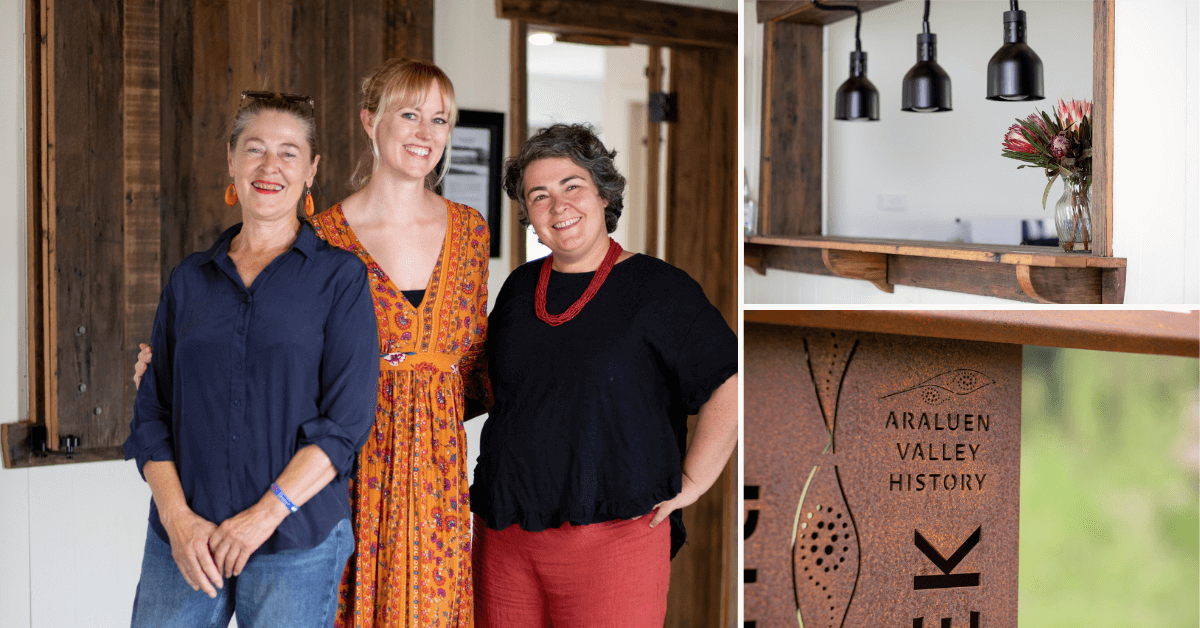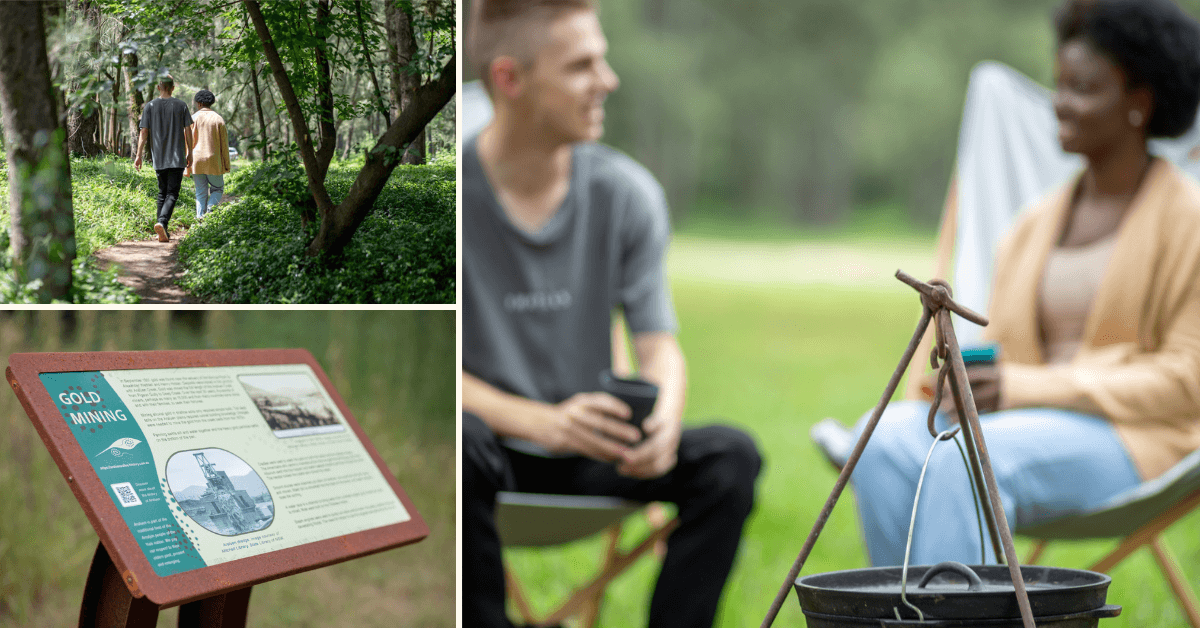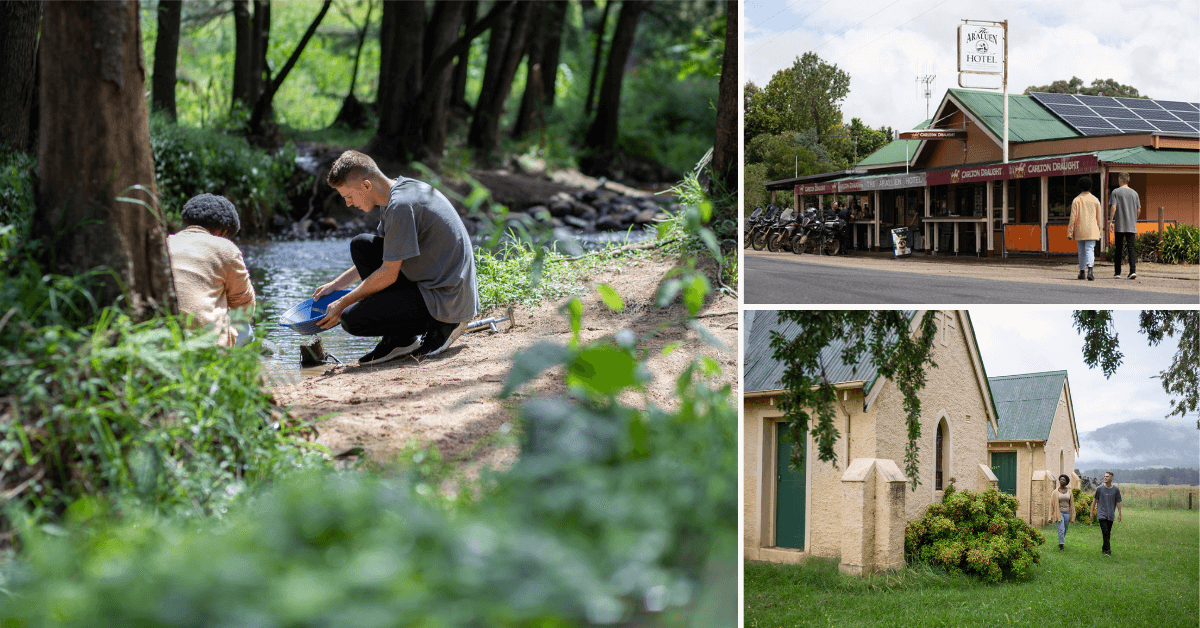Just over an hour outside of Queanbeyan is the Araluen Valley, nestled within the scenic Southern Tablelands and boasting a rich history that dates back to the gold rush era of the mid-19th century.
Known as the ‘Happy Valley’ and the ‘Valley of Peace’, the valley developed over millennia as the Moruya River and her tributaries gradually eroded the land back from the coast. This erosion also created the dramatic surrounding mountains, which has historically made access to the valley challenging.
The Arralyin people, one of the 13 major tribal groups of the Yuin Nation, are the traditional owners of the valley. For millennia, they have held knowledge of the waterways, walking tracks and flora and fauna. They spoke and still speak Dhurga, which was the language spoken from south of Nowra to Narooma inclusive of Braidwood and Araluen.
Today, thanks to the dedicated efforts of the Araluen History Group, it’s never been easier or more enjoyable to immerse yourself in this history and forge a deeper connection with the valley.

Bringing history into the future
The Araluen History group came together in 2022 with the mission to preserve and share the valley’s heritage, making it accessible to all.
“Some of us were born in the valley, and some have connections going well back to the gold rush times. Others are more recent arrivals with a passion for our history,” says Laurann Yen.
The group’s latest endeavours include the new website and Araluen History Trail, both launched recently in April 2024.
The website is “the location for all the detailed information we’ve collected about the area, from early First Nations history to the present day.” It is where people can learn about the valley, research their family histories, listen to beautiful oral histories given by long-standing residents, find old photographs—and even scan archival census data from 1871.
Everything is further brought to life with the Araluen History Trail, a self-guided journey where each stop reveals a chapter in the valley’s past.
As much as the History Trail caters for travellers, it was also created with locals in mind: “Our local community is telling us that with the new signs, it suddenly looks as though “Araluen matters”, and that’s what we feel.”

The Araluen History Trail—in words
The Trail starts at the Araluen Campground with heritage signs about gold mining in the valley and the former villages of Burketown and Deep Creek.
The Trail then crosses the creek towards the Anglican cemetery, which has information about the more than 200 people who have been buried there.
Afterwards, the Trail takes you to Burketown, previously the valley’s second busiest village, and the Catholic cemetery with its views over the valley and hills—and records of over 170 graves.
The Trail will take you back over the creek to join the main road through Newtown again, heading past the Union church. When you arrive at Araluen Federal Hall, be sure to check out the garden which contains old agricultural machinery, and tells the stories of the agriculture, churches and schools of the area. There’s also the first building from the site with a big boiling copper—used more for cooking than for laundry!
You’ll then head out to the Recreation Ground and the War Memorial (made from Moruya granite like the Harbour Bridge). The Recreation Ground is the former site of Redbank village, a centre for the valley in the gold rush days, with thriving businesses, schools, churches and halls.
The Trail finishes in the southern part of the valley, once home to the villages of Mudmelong and Crown Flat.
Along the way, should you see something you wish to dive deeper in, scan the QR code signage to be taken to a wealth of online resources covering key events, gold mining and bushrangers, agriculture, World Wars I and II and people and their daily lives.

So, how can you get involved?
Whether you’re a longtime resident or a curious traveller passing through, there are plenty of ways to join the journey. Explore the valley online via the website, or on foot via the History Trail. And if you have a story to share, the Araluen History Group would love to hear from you: “We are really hoping that people will want to share their family histories of Araluen with us to build a really comprehensive picture of our last 200 years history, and hopefully, more of our history from the Yuin nation people who lived here first.”
Written by Thuc Do for Visit Queanbeyan-Palerang.

